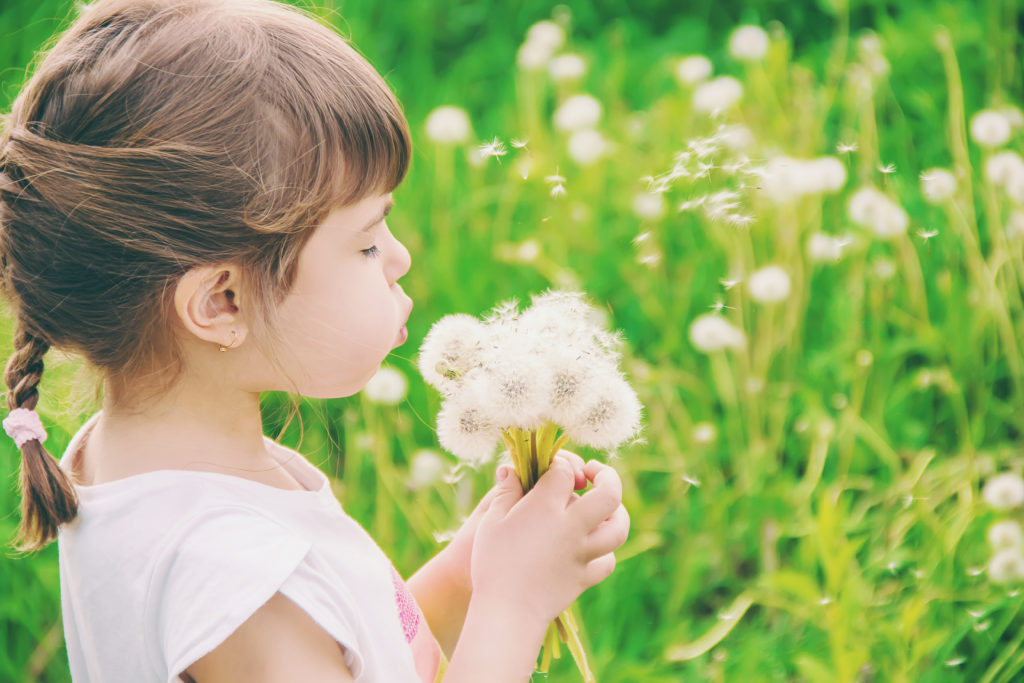Environmental allergies are an immune response to allergens (triggers) in our surroundings. Unlike food allergies, they are not a reaction to something we have ingested. Common environmental allergens are pollen, dust mites, pet dander, mold, and cigarette smoke. (1)

When an allergen comes in contact with your cells they produce antibodies called immunoglobulin E (IgE). These antibodies trigger the release of histamine, which quickly travels through the body to fight off what it senses as harmful, causing inflammation. Histamine is a part of the immune system that causes all of the symptoms associated with allergies, such as sneezing, runny nose, shortness of breath, itching, headaches, wheezing, fatigue, and red eyes.
Many allergy medications work as antihistamines blocking histamine activity in the body, but interestingly, there are many foods that also have anti-histamine effects, while others trigger the release of histamine. Therefore, it is good to know what to eat and what to avoid during high-allergy season.
Foods and plants with anti-histamine effects (2), (3)
- Stinging nestle
- Quercetin is an antioxidant found naturally in raw onions, apples (skin), leafy vegetables, broccoli, peppers, grapes, black tea, green tea, and cherries (4).
- Bromelain is found most concentrated within the core of the pineapple, but also throughout the sweet parts and in the juice.
- Vitamin C is prevalent in many fruits and vegetables such as citrus fruits, broccoli, cantaloupe, cauliflower, kale, kiwi, papaya, red, green or yellow pepper, sweet potatoes, strawberries, and tomatoes.
- Local honey contains pollen from all the local plants that your child is allergic to. Taking small frequent doses can help desensitize your child if taken before allergy season starts
Therefore, eating the rainbow of colored fruits and veggies daily that are rich in anti-oxydants can be very helpful.
Adding anti-inflammatory foods to your diet like fatty fish (e.g. wild caught salmon or sardines); nuts and seeds; extra virgin olive oil; coconut oil, turmeric, onions, garlic, ginger (5) will also be beneficial.
Some essential oils that are particularly helpful for allergies are chamomile, eucalyptus, lemon, lavender, and peppermint.
Frequent nasal rinses are also recommended.
Foods to avoid on a low-histamine diet
- Chocolate, wine, and strawberries are on the top of the list, followed by avocados, bananas, dairy, eggs, oranges, peaches, pineapples, raspberries, spinach, and tomatoes. Yes, some of these are also on the list of good foods, so their effects will need to be tested individually.
- All processed foods, artificial flavors, colors, and preservatives can increase histamine release.
- Fermented foods such as cheese (especially aged), yogurt, sour cream, buttermilk, kefir, sauerkraut, kimchi, pickled veggies, kombucha, and fermented meats) have lots of health benefits but can cause histamine release and therefore may need to be avoided during allergy season.
- Avoid dairy products. Not only do they trigger histamine release, they are also inflammatory and create more mucus, making the unpleasant allergy symptoms worse.
If it’s not essential, consider avoiding NSAIDs and antibiotics. They can both disrupt production of the enzymes that degrade histamine.
And last but not least, know that stress always worsens any condition, and in this particular case stress causes mast cells to release histamine.
References:
- https://www.healthline.com/health/allergies/environmental-allergies
- https://www.healthline.com/health/allergies/best-natural-antihistamines#stinging-nettle
- https://healthykidshappykids.com/2018/03/25/take-control-of-your-childs-allergies-naturally/
- https://www.ncbi.nlm.nih.gov/pubmed/23333628
- https://www.healthline.com/nutrition/13-anti-inflammatory-foods




